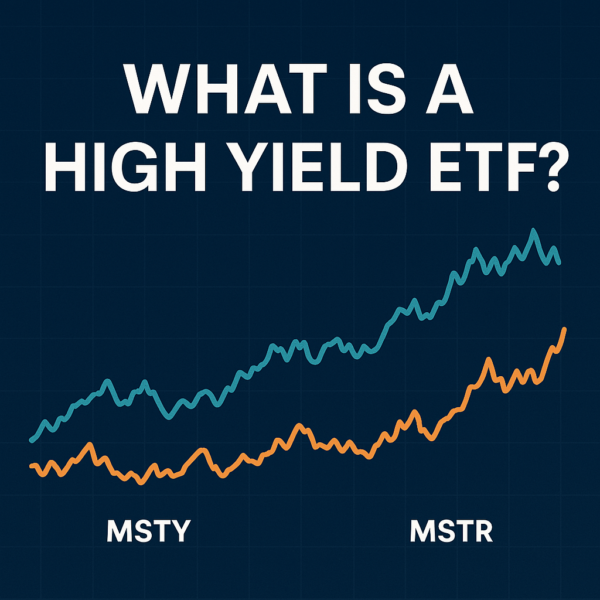What are Bond ETFs?
Investors looking for broad-market exposure within a specific niche will find it in Exchange-Traded Funds (ETFs). And, for those investors who prefer fixed-income investments or exposure to debt securities, there’s no better avenue than bond ETFs. These funds are the perfect marriage between the benefits of fixed-income instruments and the mitigated risk of index investing.
Whether you’re striving for a balanced portfolio approach or building a passive income portfolio for retirement, bond funds are a simple way to gain exposure to the broader bond market. Here’s a closer look at how these funds work, how to invest in them, the benefits of bond ETFs and some of the potential drawbacks to be aware of.

A Quick Recap on ETFs
To explain what a bond ETF actually represents, it’s important to drill down into the concept of an ETF. These funds track specific indices and seek to mirror their movements, as a way to provide the stability of a broad-market approach within a niche type of investment. They’re similar to mutual funds; however, they tend to have lower investment minimums and more freedom in how they trade.
How Bond Funds Work
A bond ETF invests in fixed-income securities, such as U.S. Treasuries. It tracks benchmark bond indices, which allows investors to gain exposure to this market segment without buying or trading bonds directly. Investors can buy or sell the bond ETF freely on an exchange, like shares of stock. This is often a more inexpensive, liquid way to participate in the bond market, while still maintaining exposure to debt securities as part of a balanced portfolio approach.
Types of Bond ETFs
One of the biggest draws of ETFs as investment vehicles is their diversity. There are ETFs focused on numerous sectors and securities, which allows investors to pick their area of focus and level of risk. The same is true for bond ETFs. There are several core categories of bond ETF to choose from, including:
- Convertible Bond ETFs
- Corporate Bond ETFs
- Floating Rate Bond ETFs
- International Bond ETFs
- Junk Bond ETFs
- Leveraged Bond ETFs
- Treasury Bond ETFs
Within each of these categories there are ETFs with different strategies to represent their respective indices. For example, the Schwab Short Term US Treasury ETF (NYSEARCA: SCHO) differs from the Invesco 1 30 Laddered Treasury ETF (NASDAQ: PLW), even though they’re both focused on U.S. Treasuries.
Coupon Payments Within Bond ETFs
Passive income is often the biggest draw of bonds for many investors. Bond ETFs encapsulate the many benefits that come with owning fixed-income securities, including this passive income. Instead of buying and holding individual bonds, ETFs allow fixed-income investors to hold shares of the fund and reap the same benefits.
ETF holders receive regular coupon payments; however, these payouts usually occur once monthly instead of bi-annually, to account for different assets within the ETF. Bond funds continually change as bonds come to maturity and new bonds get added, which means rolling coupon payment schedules. The ETF’s coupon rate might also change month-over-month as a result.
The Benefits of Investing in Bond ETFs
In addition to the relative benefits that come with investing in ETFs, the decision to invest in bond funds offers investors a few other distinct advantages over simply buying or trading fixed-income securities.
- Liquidity. Investors can buy and sell out of ETFs at any time, making them a highly liquid investment vehicle.
- Indexation. Indexation not only balances the risk-reward of a fund, it also enables tax-efficient returns over longer holding periods.
- Transparency. Investors are able to see the makeup of the fund and the constituents used to mirror the performance of the benchmarked bond index.
There are also several beneficial strategies that accompany bond fund investments. For instance, bond ETFs are useful for laddering in the same way an investor might with individual bonds. However, there tends to be less risk when laddering with ETFs, due to their mitigated risk.
The Drawbacks of Investing in a Bond ETF
While there are few real drawbacks to bond funds as an investment vehicle, there are some important considerations investors need to be aware of.
As with any bond investment, interest rate fluctuations are a key consideration. Changing interest rates have a direct impact on bond values and the bond market as a whole. Because an ETF tracks a benchmark index, it’s likely to face disruption in the event of significant changes to the interest rate. Investors with large positions in a bond ETF will likely find themselves affected. Bond fund investors need to be very aware of interest rate risk.
It’s also important to remember that most bond funds don’t have a maturity date. They’ll continue to turn over fixed-income securities as the fund evolves with time. That means the principal payment isn’t guaranteed like it would be for those buying individual bonds. As a result, bond funds are best-suited for those focused on rolling passive income.
A Flexible Way to Gain Bond Market Exposure
Most balanced investors will find themselves with some level of exposure to fixed-income securities through the bond market. Instead of buying and holding individual bonds, however, it’s often advantageous to hold shares of a bond ETF. These funds offer index-level exposure to the broader market, while still retaining the coupon payments and relative stability that make bonds attractive.
Investors looking for a liquid, passive, advantageous way to capitalize on fixed-income securities will find it through bond ETFs.





